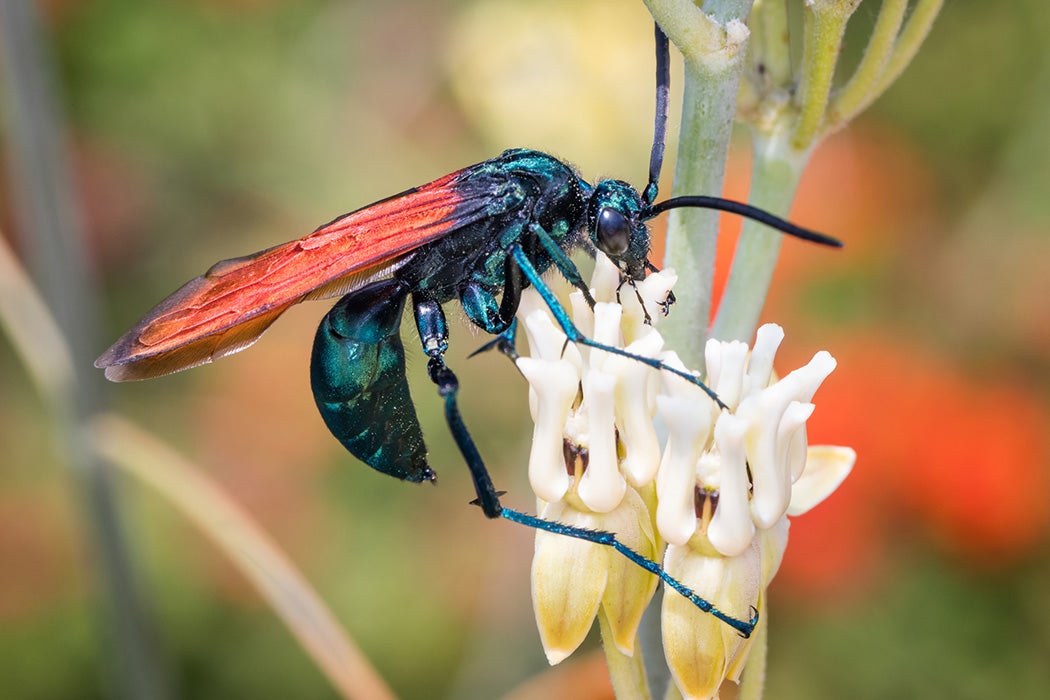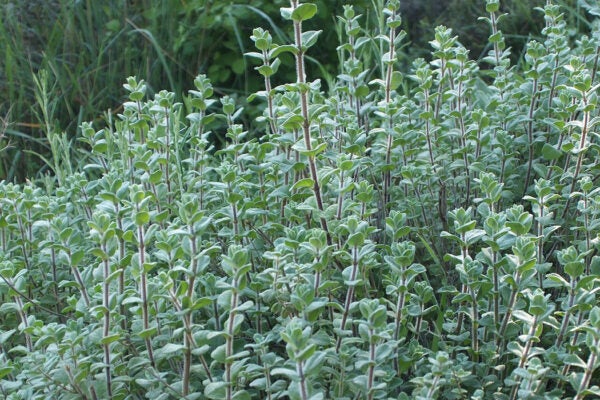Some of the most painful stingers in the world are the tarantula hawks. In the United States, there are some twenty-five species or subspecies of these tarantula-hunting wasps. Their prey are often much larger than they are, and they use their stingers to paralyze the spiders for food for their young. But their venom also has a defensive function. Their painful stings, writes biologist Justin O. Schmidt, give them “near absolute protection from vertebrate predators.”
“Tarantula hawks nearly write the manual for insect defenses,” Schmidt writes. The wasps are
brightly colored and odored, have hard, closely fitting, smooth and slippery integumentary sclerites, live long, form defensive warning aggregations, and even have sharp and effective leg spines—and they sting. These combined properties leave little doubt that tarantula hawks are among the best defended animals on [E]arth.
As something of a vertebrate predator himself, Schmidt should know; he’s the “man who got stung for science” and devised a scale of insect-sting pain. On the Schmidt Scale, tarantula wasps are a four (4), the highest rating (the scale climbs by half-points). Fours are a lot more painful than the twos (2) of honeybees and yellowjacket wasps, the stingers of which more people in the US have experienced.
The Schmidt Scale specifically describes Pepsis genus tarantula hawk stings as “blinding, fierce, shockingly electric” and colorfully likens the experience to “a running hair dryer [that] has just been dropped in your bubble bath.”
This “instantaneous, electrifying, excruciating and totally debilitating” pain is thankfully brief. Schmidt recommends laying down and screaming as the pain subsides to a minor level in three or so minutes. Another four on the Schmidt Scale, the bullet ant, delivers pain that can last for twelve or more hours.
The wasp sting’s intense, short-lived pain isn’t likely to shorten your life. Even multiple stings are basically harmless once the pain passes. For all the punch, the “lethality of the venom is essentially nil.” Tested on laboratory mice, tarantula hawk venom is “at best […] only about 5 percent as lethal as honeybees or the yellowjacket.”
In fact, “for mammals, tarantula hawk venom is an enormous bluff, a biological deceit of major order,” Schmidt writes. “The pain speaks loudly, but no club follows. Instead of causing death or paralysis, or leaving damage, a sting only leaves a memory in envenomed mammals.”
But what a memory! Conveniently, these wasps are boldly conspicuous, with “iridescent black or blue-black bodies bedecked with bright yellow, orange, red, or brownish wings, and shiny black wings on iridescent black or blue-black bodies.” These are warning signs that predators learn to take seriously.
Schmidt reports that there no known examples of amphibian, reptilian or mammal predation on adult tarantula hawks. There are a handful of bird predation records, with wasps taken by kingbirds and roadrunners.
The “danger, danger!” messaging works for male tarantula wasps, too, even though they do not have stingers. The stingers of all the Hymenoptera (ants, wasps, bees) evolved from the ovipositor, meaning only females can sting. By looking like females, male wasps mimic the threat of the sting, however.
Weekly Newsletter
As it happens, a bunch of other insects have also evolved to look like tarantula hawks. These include flies, moths, beetles, and grasshoppers, all emblazoned with don’t-mess-with-me tarantula hawk color patterns. Like male wasps, they’re all bluffing: they don’t have stingers.
Respect for, or fear of, the power of the sting goes a long way.
“One measure of biological success is the ability of an organism to feed its young well, to avoid being fed upon by other organisms, and to live a long life, usually terminated by old age,” Schmidt concludes. “By these standards, tarantula hawks exemplify biological success.”







